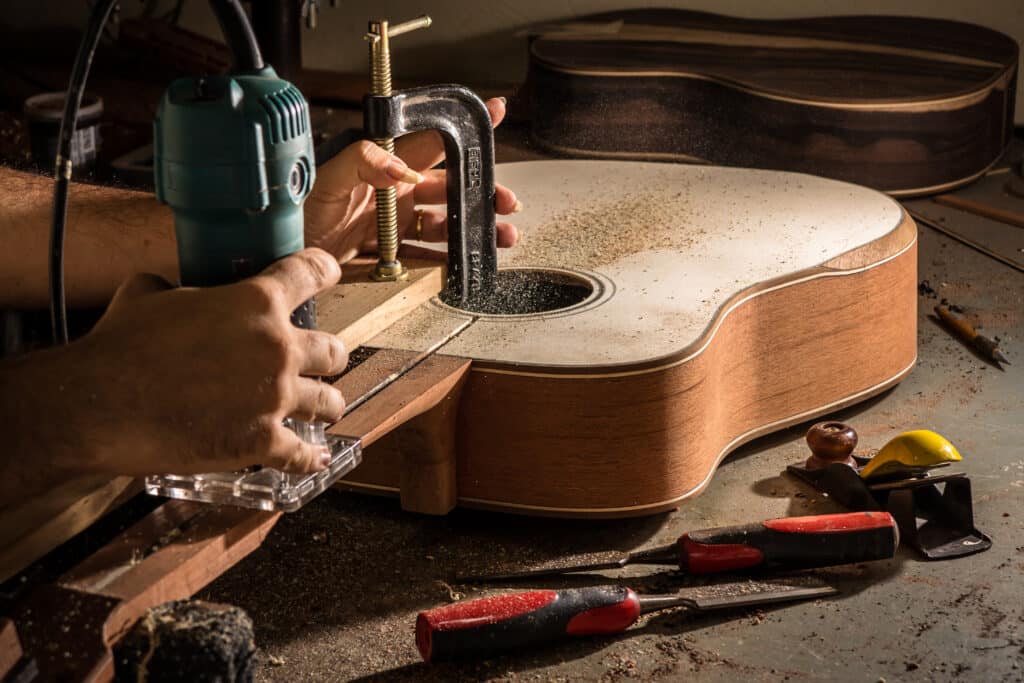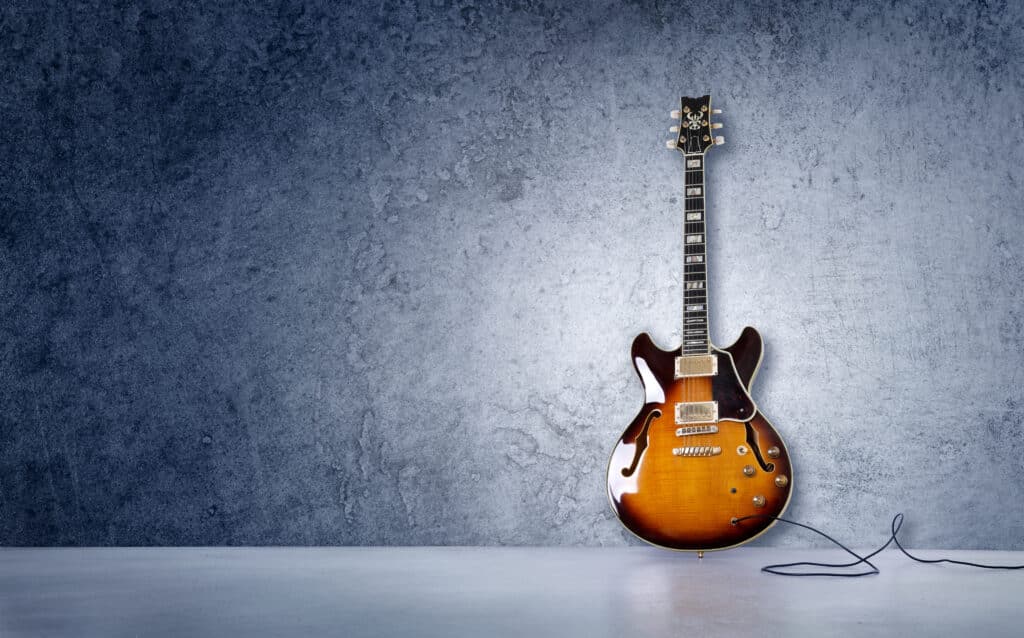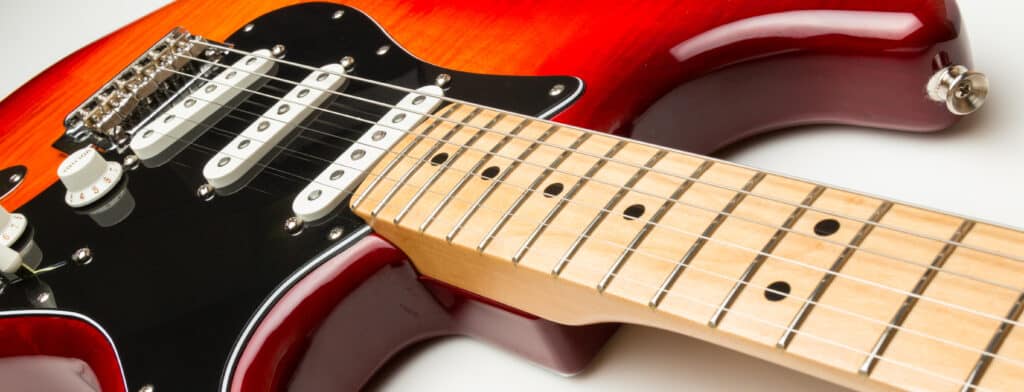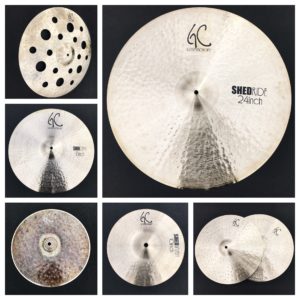Parts of a Guitar
Parts of a Guitar Diagram

- The headstock holds the tuning pegs. The guitar is tuned at the head.
- The neck is where you hold the guitar with your fretting hand.
- The body is where you strum or pick the strings with your picking hand.
Parts of an Acoustic Guitar
The first rule of guitar mastery is to know your instrument! When you become a student of the guitar, it will become much easier for you to follow along with an instructor after you become knowledgeable about how the guitar is constructed.
Each guitar part is important to its overall sound. The quality of these components separates the great instruments from the mediocre ones. Knowing how these guitar parts interact will also help you select the best guitar for your musical journey.
Guitar Headstock
The headstock of the acoustic guitar is attached at the end of the neck. The headstock holds the tuning pegs, which are used to tighten or loosen the guitar strings.
On a standard guitar, six tuning pegs are attached to the headstock – one for each guitar string.
Guitars come in many shapes and styles, but there are three (3) widely-used standard configurations for guitar headstocks:
- 3 Tuners Per Side
- In-line Tuners
- Classical Tuners
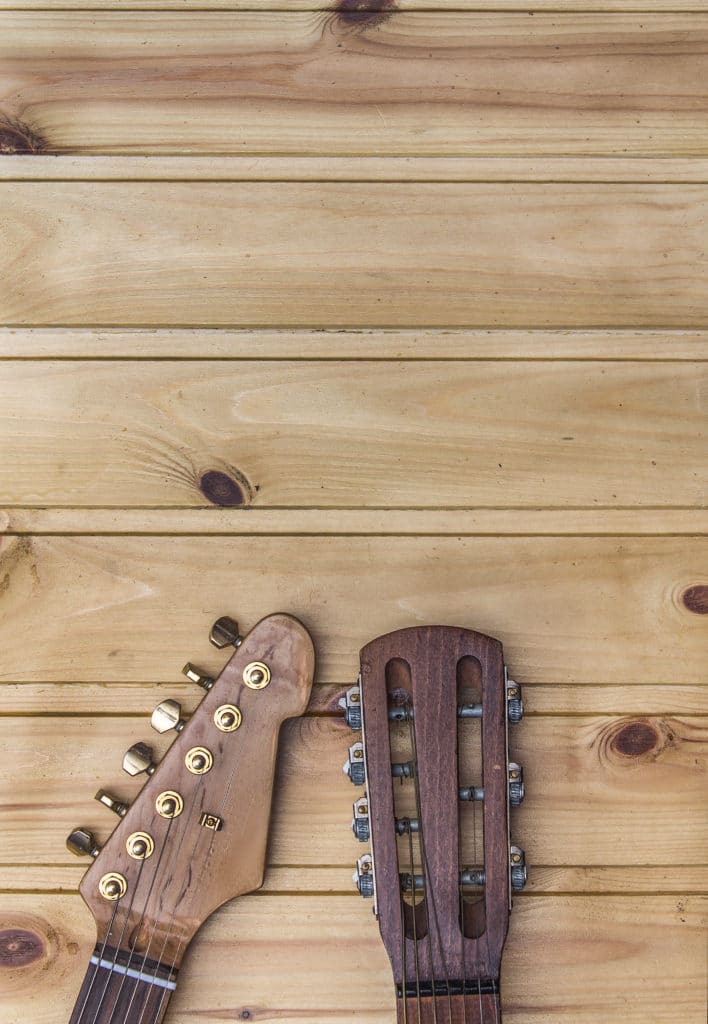
Nut
The nut is a seating mechanism that holds the guitar strings in place. On cheaper guitars, the nut is made of inexpensive plastic. On more expensive or custom guitars, luthiers typically use bone material to make the nut.
Nuts can be made of bone, plastic, graphite, Corian and brass.
The material chosen for the nut will affect the tone of the guitar and how easy it is to play.
Saddle
The saddle is a small piece that sits just behind the nut and holds the strings in place. It’s usually made of bone, brass or graphite, but can also be made from other materials like ivory, Corian or plastic.
The saddle is the end point of the strings, and its height will affect how easily the guitar can be played. It also affects the sound of an acoustic guitar by transferring vibration from the strings to the body.
Tuning Pegs/Machine Heads
Tuning pegs (or machine heads) are used to change the tension of each string and allow the player to tune the instrument. The pegs are attached to the headstock and will either have a knob or a gear at one end for tightening/loosening the string.
Tuning Pegs can be made of metal, plastic, wood or brass. Some higher-end tuning pegs also come with locking mechanisms which prevent them from slipping during playing or tuning.
Neck
The most popular wood type for the neck is maple, but guitar makers use many different woods for their tone and aesthetics. Don’t confuse the neck with the fretboard. The neck is where the guitarists hold the guitar and the fretboard is attached to the other side of the neck.
When the guitar is held properly, your thumb will be positioned around the back of the neck and your other fingers will play on the fretboard.
Fretboard / Fingerboard
The fretboard is where the notes are played on the guitar with your fretting hand. The guitar strings are pressed down on the frets to create a specific note when the string is plucked.
The frets (or fret wire) are raised metal notches spread across the fretboard. Each fret represents a musical note on each guitar string.
The most common fretboard materials are rosewood and maple. Rosewood fretboards usually offer a darker, warmer sound while maple fretboards are brighter and more crisp.
Sound Hole
The sound hole is the place where the sound exits the acoustic guitar when it is played. If you are using a microphone to amplify or record the guitar, place the mic near the sound hole for better sound quality.
The size and shape of a soundhole varies according to the type of guitar. Acoustic guitars usually have a round soundhole, while classical guitars have an oval-shaped one.
Pick Guard
Pick guards are pieces of plastic attached to the body of a guitar to protect it from damage caused by picking with a pick or strumming the strings.
The pick guard is usually shaped like a circle or an oval, and it’s made from either plastic or metal. The purpose of the pick guard is to prevent unwanted scratches or dents that can occur when strumming too hard on the strings.
Acoustic Guitar Bridge
The bridge is an important part of the guitar as it helps to transmit the strings vibrations into the body of the instrument. The bridge sits atop the soundboard (the “top” of the acoustic guitar) and holds the strings in place. It’s also where the strings are fed through the body of the guitar before being anchored on the headstock side.
The bridge is usually made from wood (like ebony, rosewood or maple) and can also be crafted out of synthetic materials such as plastic or composite. Different types of bridges affect the sound and playability of a guitar, so it’s important to choose the right one for your instrument.
The bridge is typically made a single piece of wood attached to the guitar body. It includes a raised nut to hold the strings in place. The strings pass through the raised nut and attach at fixed holes in the bridge secured by bridge pins.
Guitar Strap Buttons
This is where the guitar strap attaches through the holes in the strap. Guitar strap buttons do not affect to sound of the guitar.
They are simply for convenience and comfort while playing.
Most acoustic guitars have two strap buttons installed, one located near the neck and another on the body of the guitar. Most electric guitars only have one strap button attached to the back of the instrument. Some newer/custom models may also feature a second strap button near the neck for added stability while playing.
Pickups
Pickups are used to amplify the sound of an acoustic guitar when plugged into an amp. Pickups can either be magnetic or piezoelectric, depending on the type of pickup you’re using. Magnetic pickups use magnets to capture string vibrations while piezo pickups use a crystal material.
Pickups can also be found in different shapes and sizes. The most common type is the under-saddle pickup, which is traditionally used on acoustic guitars.
Guitar Strings
The choice of strings has a huge impact on the sound and playability of an acoustic guitar. There are many different types of strings available for different guitars, so make sure to pick the right ones for your instrument.
Each string should also be regularly changed as it wears out with use. Changing strings can also help you maintain your guitar’s intonation and playability.
Guitar strings come in different gauges (thickness) and materials. Check out the Ernie Ball 2146 Earthwood Medium Light Acoustic Phosphor Bronze String Set (12 – 54) or the Elixir Strings Phosphor Bronze Acoustic Guitar Strings w NANOWEB Coating, Light (.012-.053) for excellent tone and feel!
The Body, Headstock, Nut, and Saddle – Working Together for Sound Perfection
The components of the acoustic guitar, such as the body, headstock, nut and saddle work together to produce sound. The type of wood used for each part affects the tone and resonance of your instrument.
When building an acoustic guitar, it’s important to consider all these parts and how they will work together to create a balanced and harmonious sound. With the right materials and craftsmanship, your guitar will produce beautiful music that will last for many years to come.
Anatomy of an Electric Guitar
An electric guitar is slightly different from an acoustic in terms of design and functionality. As opposed to using strings to make a sound like an acoustic instrument, electric guitars use pickups which convert string vibrations into electrical signals that are then amplified.
The main components of an electric guitar are the body, neck, pickups, tremolo bar, bridge and headstock. Let’s take a closer look at each one:
Body
The body is usually made from wood such as ash or alder. It houses the electronics of the guitar and provides a platform for the pickups and strings to vibrate.
Neck
The neck is usually made from maple or mahogany and houses the fretboard. The length of the neck and scale (distance between frets) will affect how easy it is to play and what type of sound the guitar produces.
Pickups
Pickups are a type of magnetic transducer that turns the mechanical vibration of strings into electrical signals. Different types of pickups can produce a wide variety of tones, from bluesy and jangly to distorted and heavy metal.
Tremolo Bar
The tremolo bar (also known as the “whammy bar”) is a device that allows the player to make rapid and precise pitch changes. The tremolo bar is attached to the bridge and when pushed or pulled will cause the strings to vibrate rapidly creating a vibrato effect.
Bridge
The bridge on an electric guitar helps transfer the vibration of the strings into electrical signals which are then sent through cables to an amplifier. Bridges are usually made from metal and come in a variety of styles such as the fixed bridge or tremolo bridge.
Headstock
The headstock is where the strings attach to the tuning pegs (or “machine heads”). It also houses the nut which helps to keep the strings at a consistent height over the fretboard. The shape and size of the headstock can also affect the sound of the guitar.
Whether you’re playing an acoustic or electric, understanding the anatomy of your instrument is key to creating a great sound. Knowing how all these different parts work together will help you get the most out of your guitar playing experience!
Conclusion
The anatomy of a guitar encompasses many parts that all come together to make music. Whether you’re an acoustic or electric guitarist, knowing the anatomy of your instrument can help you get the best sound from it. From the fretboard and bridge to the pickups and headstock, understanding how all these components affect the overall sound can help you create beautiful music!


